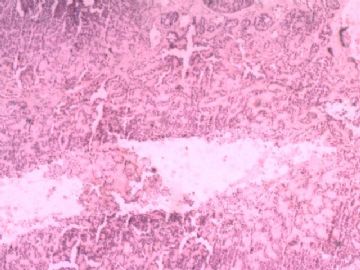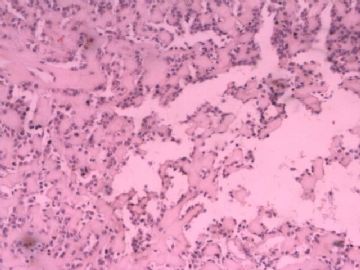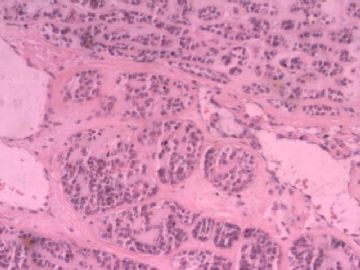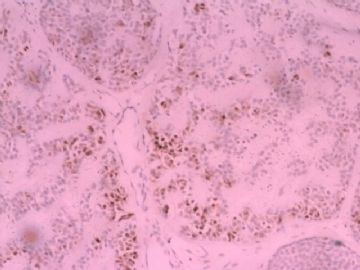| 图片: | |
|---|---|
| 名称: | |
| 描述: | |
- 右枕叶肿物
-
Although metastasis is the preferred possible diagnosis, the exact type and origin of malignancy are not very straight forward. The neoplastic cells seem to have a striking papillary architectural growth pattern and are associated with abundant hyalinized material - likely collagen or basement membrane material. I don't think this is a choroid plexus neoplasm, papillary glioneuronal tumor, or ependymoma. Metastatic adenocarcinoma with papillary growth pattern is my diagnosis. Immunohistochemical stains (TTF-1, AE1, S100, sm muscle actin, high molecular weight keratin 34betaE12) are required for further investigation of its primary origin.

聞道有先後,術業有專攻



























